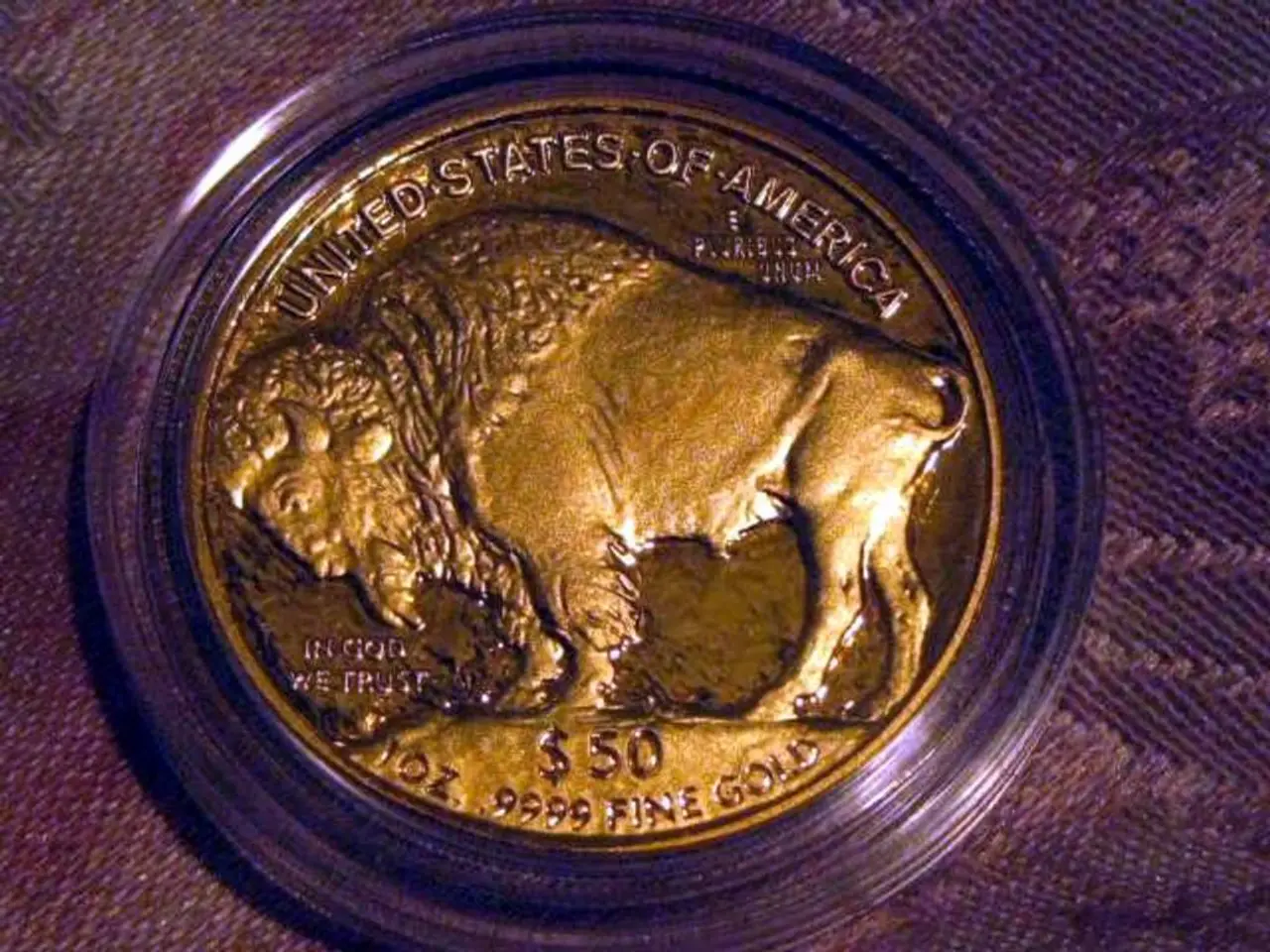U.S. currency approaching multiple-year lows in the run-up to Trump's forthcoming tariff deadline
The British pound remains close to its July 1 peak of $1.3787, its highest since October 2021, while the U.S. dollar faces a challenging period against major currencies such as the euro, Swiss franc, and Japanese yen. This is largely due to the anticipated tariff increases announced by President Donald Trump, which are set to take effect on August 1.
The new tariffs, including significant increases on steel and aluminum imports, household appliances containing steel or aluminum content, automobiles, and automobile parts from all trade partners, have sparked concerns about their potential impact on the U.S. economy. According to James Kniveton, a corporate currency expert at Convera, the impact may be less significant due to the anticipated nature of the tariffs and the market's valuation of deadline extensions.
The U.S. dollar is currently at its lowest level against the euro since 2021 and weakest against the Swiss franc since 2015. The dollar index hovered above the nearly 3.5-year low of 96.373 seen on Tuesday. The U.S. dollar fell 0.1% to 0.7944 Swiss francs in Asian markets, and the euro fell 0.1% to $1.1773, not far from its July 1 peak of $1.1829, its highest since September 2021.
The anticipated tariff increases tend to introduce economic uncertainty and dampen growth, which can weaken the U.S. dollar by reducing investor confidence in the U.S. economy. Higher tariffs could potentially lead to a yuan devaluation as a policy tool to offset tariffs, according to J.P. Morgan.
In the baseline scenario, with lower tariffs and easing inflation, the Fed's dovish stance and lower interest rates might exert downward pressure on the USD, making it weaker against major currencies. Conversely, in a high-tariff environment causing higher bond yields and fiscal tightening, the USD might be supported by higher yields attracting capital inflows, although this could be offset by reduced economic growth prospects.
Major currencies like the euro, Swiss franc, and yen traditionally serve as safe havens during global uncertainty. Under heightened trade tensions and tariff escalations, these currencies could appreciate against the USD as investors seek safer assets.
President Donald Trump will name a dozen countries receiving letters with new higher tariffs on Monday, and traders are awaiting headlines related to trade ahead of the tariff deadline. However, President Trump has stated that his administration is close to finalizing several trade deals in the coming days, which could potentially ease some of the trade tensions. So far, only the United Kingdom, China, and Vietnam have agreed to some form of trade deal with the White House.
In summary, the anticipated tariff increases—especially on steel, aluminum, automobiles, and China imports—are likely to weigh on U.S. economic growth and contribute to mixed effects on the USD. A scenario of tariff reduction and easing inflation favors a somewhat weaker dollar due to Fed rate cuts, while a high-tariff environment with economic turbulence could both support the dollar via higher yields or weaken it due to growth concerns. Major currencies like the euro, franc, and yen may strengthen against the USD amid trade uncertainties and risk aversion.
The potential impact of the anticipated tariff increases on various sectors, such as finance, business, politics, and general-news, is a cause for concern due to the economic uncertainty they introduce. This uncertainty, coupled with the anticipated tariff increases on steel, aluminum, automobiles, and China imports, could weaken the U.S. dollar against major currencies like the euro, Swiss franc, and yen, which are traditionally sought after as safe havens during global uncertainty.




